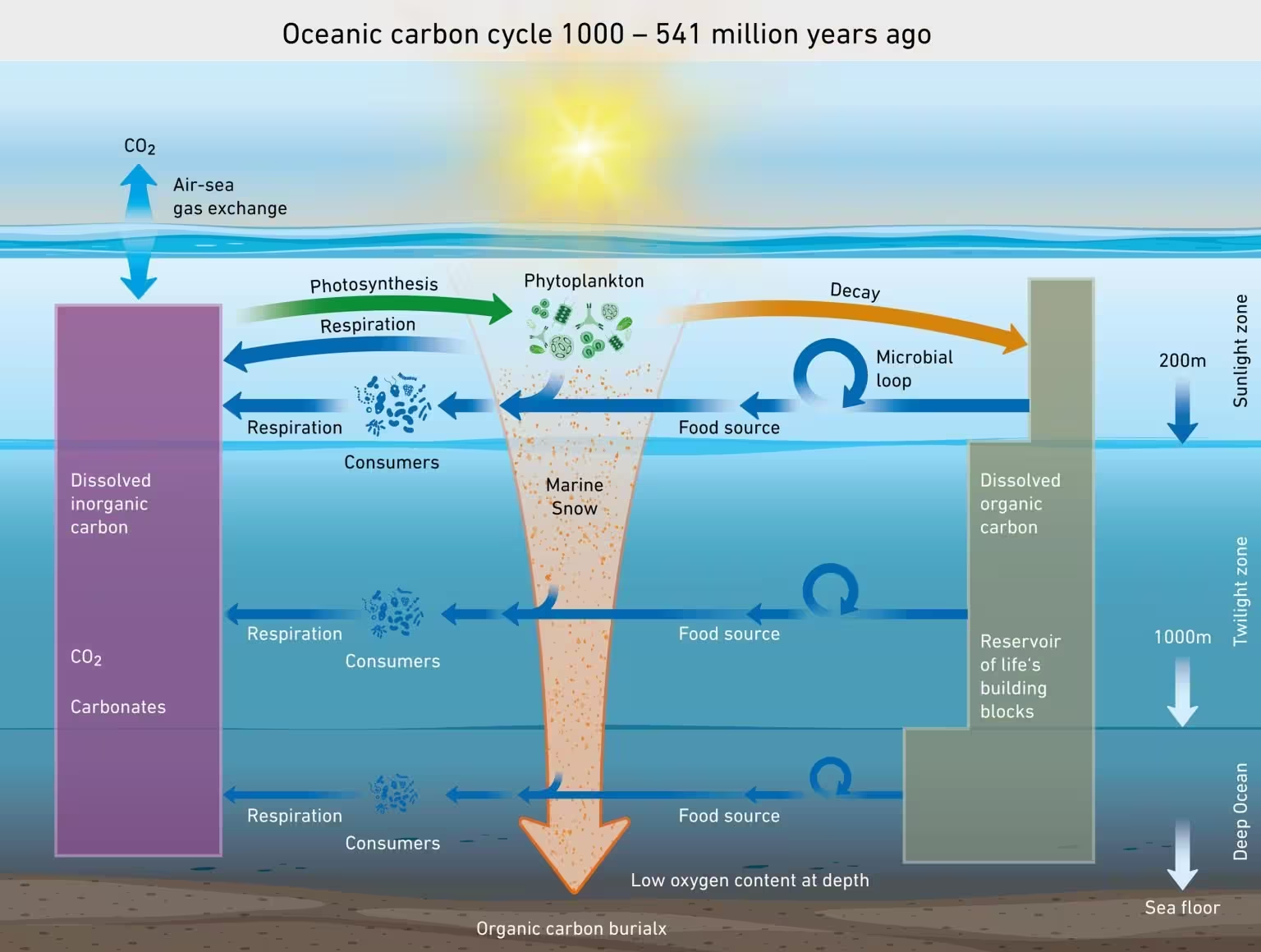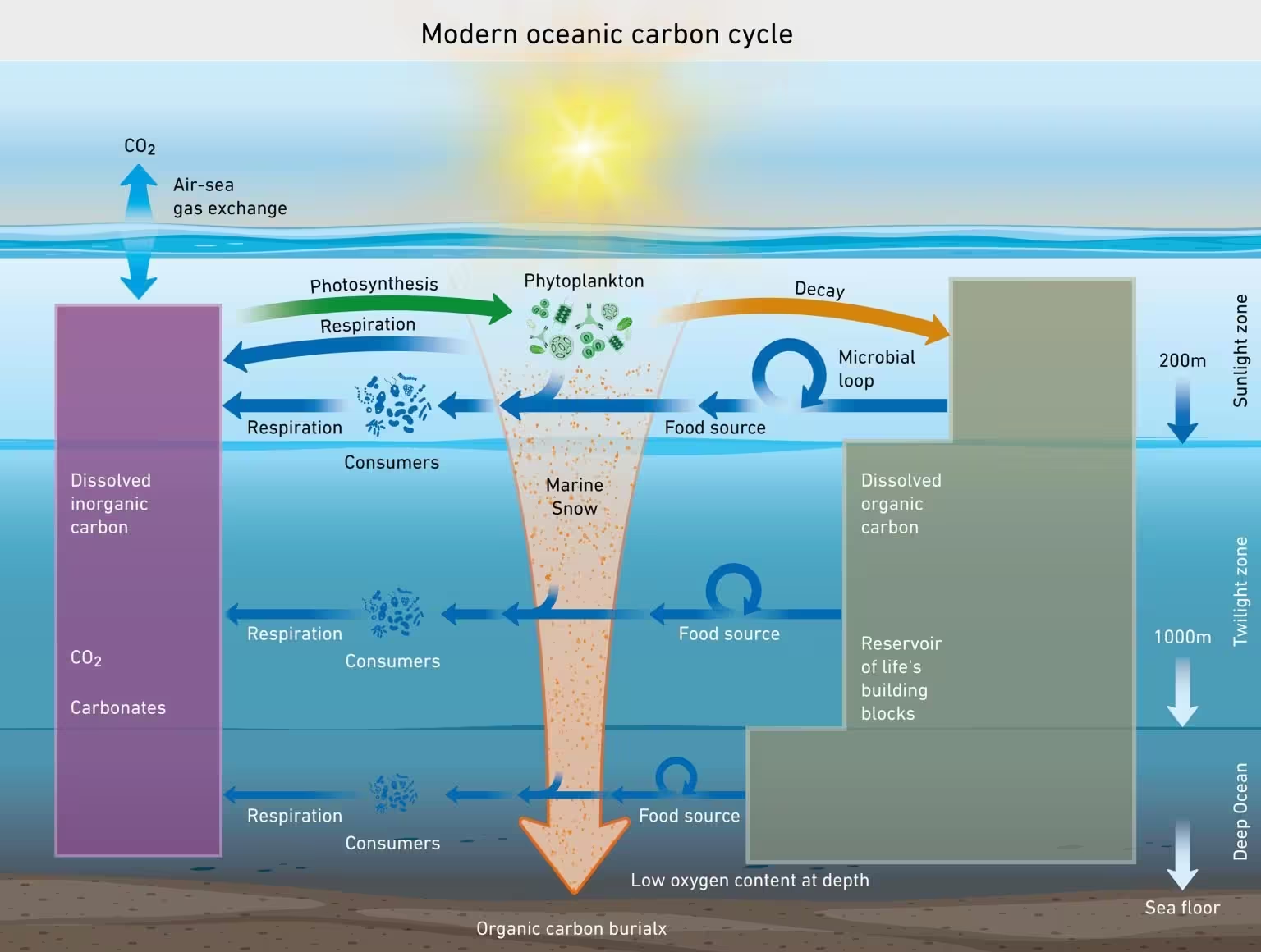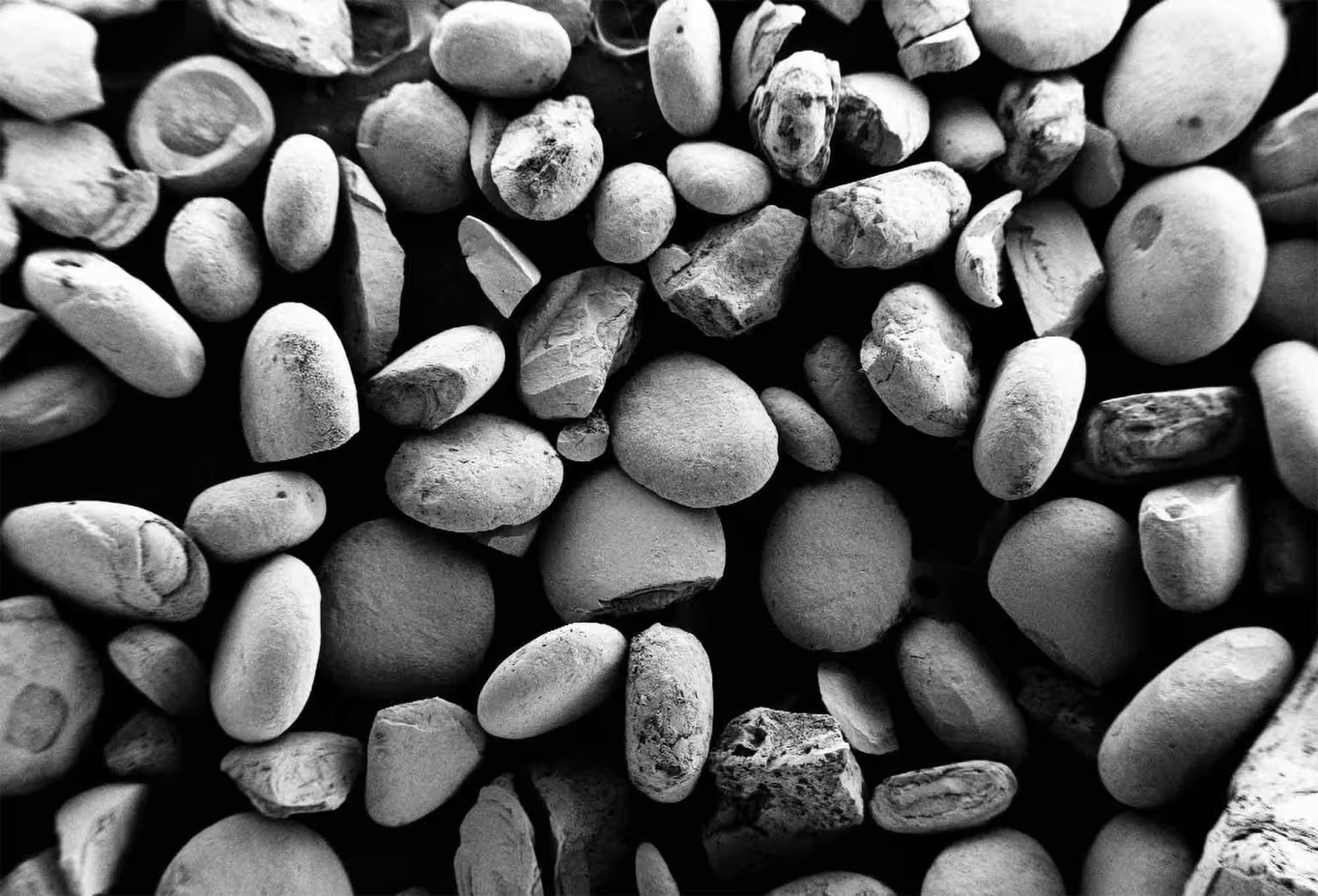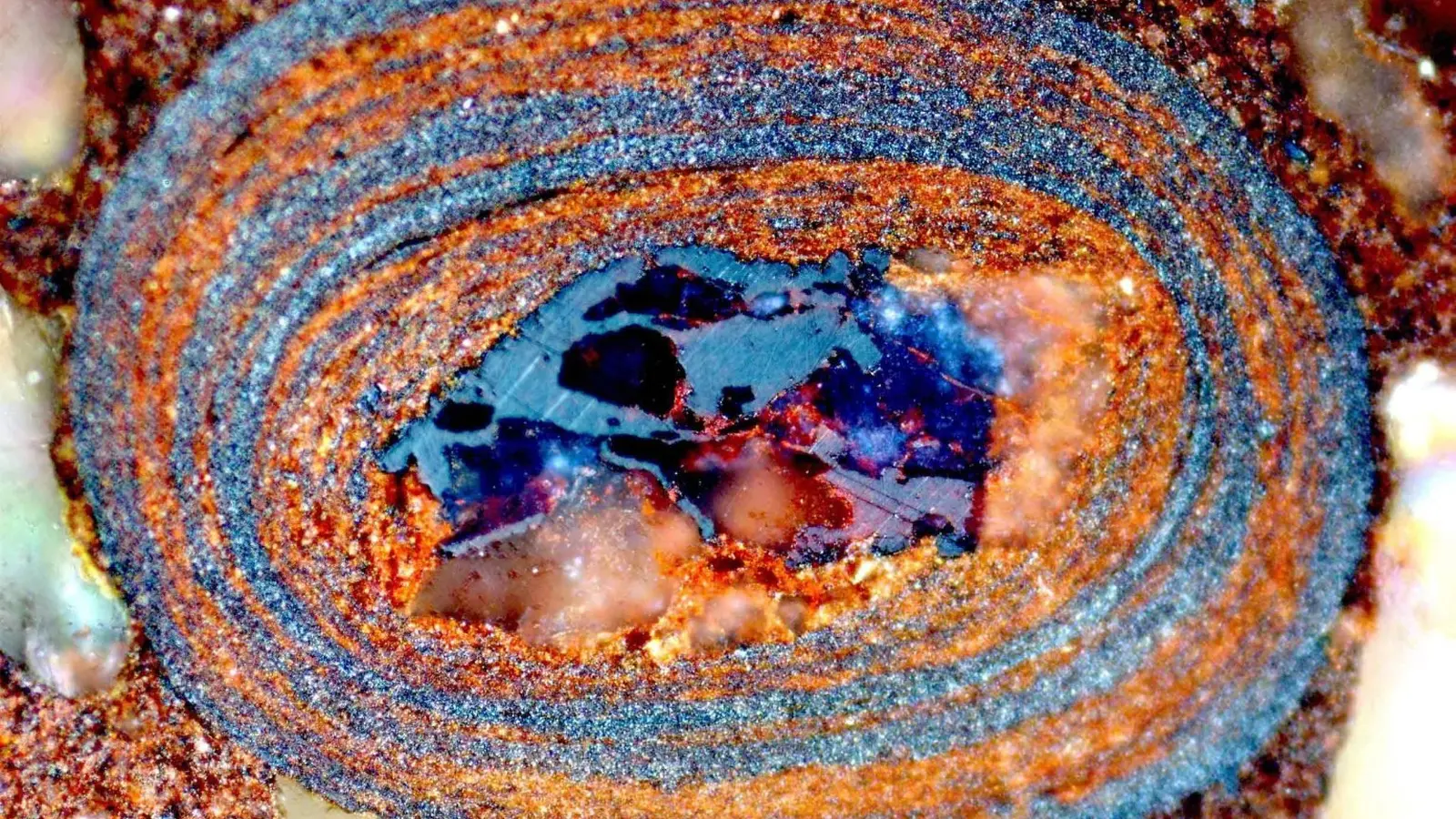8 Minutes
Cross-section of an egg-shaped iron oxide stone: It holds information about the amount of organic carbon in the sea millions of years ago, much like a time capsule. Credit: Nir Galili /ETH Zurich
Tiny, sand-sized iron-oxide grains—called ooids—are rewriting our understanding of Earth’s ocean chemistry during critical chapters of early life. A team of researchers at ETH Zurich developed a new analytical approach that reads chemically preserved organic material trapped inside these micrograins. Their work indicates that dissolved organic carbon (DOC) in the oceans between roughly 1,000 and 541 million years ago was dramatically lower—by 90–99%—than present-day values. The finding challenges long-standing theories linking high oceanic organic carbon reservoirs to global ice ages and the emergence of complex multicellular life.
Scientific background: carbon in the ancient ocean
Why dissolved organic carbon matters
Dissolved organic carbon is a major global carbon pool composed of small organic molecules recycled in seawater. DOC arises when phytoplankton, bacteria and other marine organisms produce organic compounds through photosynthesis and other metabolic processes, and when decomposition releases soluble fragments back into seawater. Today, DOC holds hundreds of billions of tonnes of carbon—far more than the carbon locked in living marine biomass—and plays a crucial role in nutrient cycling, oxygen balances, and climate feedbacks.
Carbon enters the ocean from the atmosphere (as dissolved CO2), from rivers and weathering, and from internal biological production. Some organic matter sinks as particulate material (marine snow) and can be sequestered in sediments for millions of years; some remains dissolved and circulates in the water column. The balance between these pathways influences long-term atmospheric oxygen levels and Earth’s surface climate.

Carbon cycle in the ocean 1,000 to 541 million years ago. Credit: S. Hegelbach and J. Kuster / ETH Zurich
Methods and key discovery
The ETH Zurich team led by Jordon Hemingway and colleagues used ooids as a direct archive of ancient seawater chemistry. Ooids are small, typically egg-shaped grains that form by accreting thin mineral layers as they tumble on shallow seafloor shelves. During growth, organic molecules present in seawater can adhere to the ooid surface and become mineral-bound within successive layers—effectively locking a chemical snapshot of the ambient seawater into a robust mineral capsule.
By extracting and chemically analyzing the organic carbon trapped inside ooid layers from rock formations up to 1.65 billion years old, researchers reconstructed DOC concentrations through time. That technique allowed a first-of-its-kind, empirical estimate of marine dissolved organic carbon for a stretch of Earth's history known for major transitions in oxygen and biological complexity.
Their results showed that, contrary to prior models and indirect interpretations, DOC concentrations during the interval from 1,000 to 541 million years ago were far lower than modern values—by roughly one to two orders of magnitude. DOC levels only rose to near-modern values after a later oxygenation event in Earth history.
“We had expected to confirm elevated organic reservoirs in the late Proterozoic,” the ETH team reports, “but the ooid record points to a much diminished dissolved carbon pool.” (This statement paraphrases the research team's conclusions and interpretation.)
Interpreting the timeline: oxygen, ice, and evolving life
The Neoproterozoic era (approx. 1,000–541 Ma) is central to hypotheses that link ocean chemistry with global glaciations and the rise of animals. Traditional explanations posited that expanded pools of dissolved organic carbon and associated shifts in biological productivity could have driven oxygen fluctuations and climate swings that enabled or constrained evolutionary innovation.
The new ooid-based measurements require reevaluating those linkages. If DOC was extremely low during that interval, then other mechanisms must explain the coincidence of icehouse conditions, increasing oxygen levels, and the diversification of complex life. The ETH team suggests a plausible biological control: the emergence and expansion of larger organisms and early multicellular life could have altered the fate of organic material. Larger cells and aggregates sink faster as particulate matter; in a largely anoxic deep ocean, that particulate carbon would have been buried rather than recycled into DOC, shrinking the dissolved reservoir.

Carbon cycle in the ocean today. Credit: S. Hegelbach and J. Kuster / ETH Zurich
This scenario implies a shift in the balance from recycling (which sustains high DOC) to burial (which removes carbon from the active cycling pool). Only once deep-ocean oxygenation became more pervasive could microbial recycling intensify and DOC recover to modern-scale reservoirs.
Broader implications and future risks
These findings not only reshape narratives about Earth’s deep past but also illuminate how ocean oxygenation states control the internal cycling of organic carbon. That link has relevance for present-day anthropogenic change: warming, eutrophication, and pollution are driving oxygen declines in many ocean regions today. Expanded zones of low oxygen (hypoxia and anoxia) could change whether organic material is recycled or buried, potentially altering DOC reservoirs, nutrient availability, and oxygen feedbacks over long timescales.
.avif)
Although the geological processes and timescales differ from modern human impacts, the study underscores the sensitivity of ocean carbon reservoirs to biological community structure and oxygenation. It calls for integrating direct paleoarchives—like ooids—into models that connect geochemistry, climate, and evolution.

They look like ordinary pebbles: egg-shaped iron oxide stones under an electron microscope. Credit: Nir Galili / ETH Zurich
Expert Insight
"This ooid-based approach gives us a rare, direct handle on a part of Earth’s carbon cycle that has until now been inferred only indirectly," says Dr. Elena Morales, a marine geochemist not involved in the study. "If DOC was indeed suppressed through much of the Neoproterozoic, it forces us to rethink how oxygenation episodes and ecological innovation fed back on each other. The next step is to integrate these empirical constraints into global carbon–oxygen models to test alternative drivers for the climate and biosphere changes observed in the rock record."
The quoted expert is a fictional composite intended to provide context and is representative of the kinds of perspectives researchers in marine geochemistry and Earth history would offer.
Technological context and next steps
The study demonstrates how high-precision geochemical techniques—capable of isolating minute quantities of organic carbon and resolving micro-layer histories in mineral grains—can transform paleoenvironmental reconstructions. Future work will extend ooid sampling to other basins and ages, compare ooid-derived DOC estimates with independent sedimentary proxies, and refine models of carbon burial versus recycling under varying oxygen regimes.
Additionally, researchers will evaluate how changes in plankton community composition, grazing pressure, and sedimentation rates contributed to the observed shift. Cross-disciplinary efforts combining sedimentology, paleobiology, and Earth-system modeling will be essential to unpick cause-and-effect relationships.
Conclusion
Ooids are small, but their message is large: the dissolved organic carbon pool in Earth’s oceans during a critical window of pre-Cambrian time appears to have been much smaller than previously thought. This discovery challenges entrenched ideas about the drivers of global glaciations and the rise of complex life, and it demonstrates how direct mineral archives can correct or recalibrate long-standing theoretical models. The work also provides an important reminder that ocean oxygenation and ecosystem structure are tightly coupled to carbon cycling—a relationship that remains highly relevant as human activities continue to alter modern oceans.
Source: scitechdaily


Leave a Comment